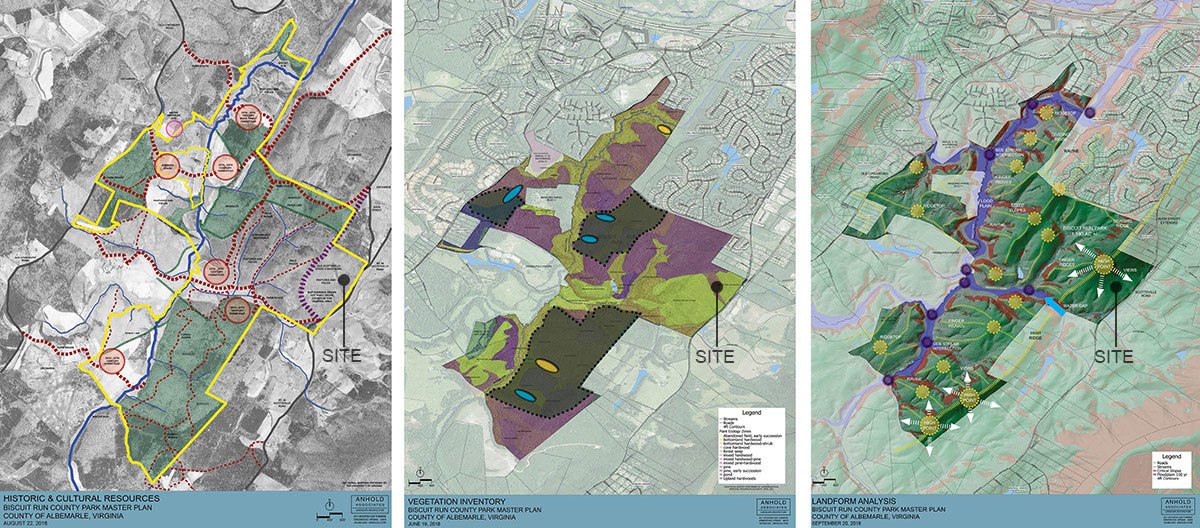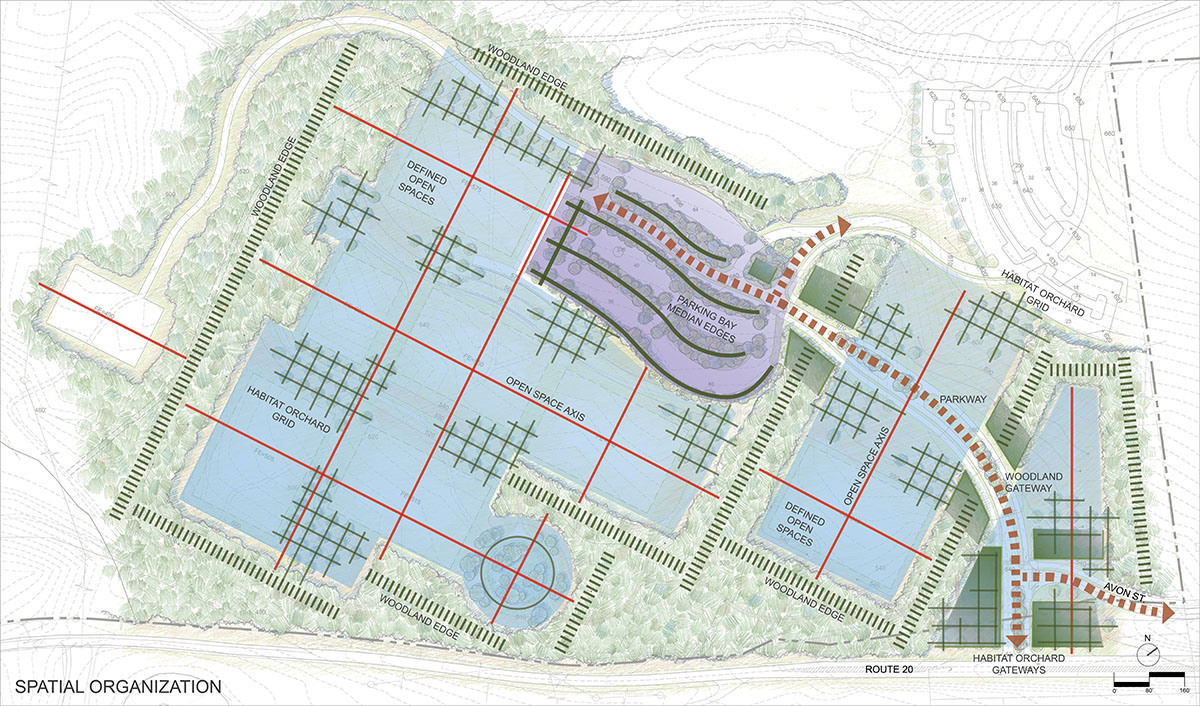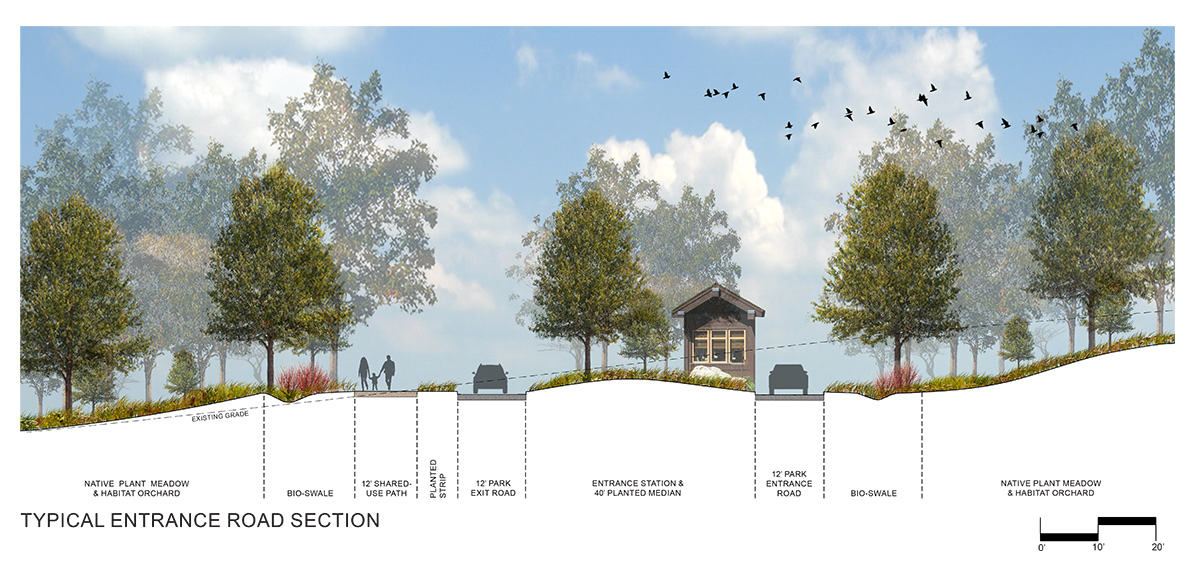Project Description
Biscuit Run Design
Following completion of the Park Master Plan in summer of 2019, Anhold began work on the phase-I design plans for Biscuit Run Park. Informed by existing site ecologies and inspired by property settlement history and local landscape archetypes, the design creates a compelling entrance and arrival sequence, artfully locates athletic fields and a future hilltop recreation area, and engages heavily impacted natural systems to articulate a strategy for conservation and environmental performance.
The park entrance is carefully positioned to create a visually prominent threshold that faces historic Route 20 and welcomes visitors into the park. Defined by carved woodland edges, extensive plantings, and stone walls, the entrance reflects the areas rich cultural history. Stormwater functions are interwoven and pedestrian infrastructure provides connections between the park and adjacent urban neighborhoods. Sweeping elegantly up the hill, the new parkway passes through a series of open meadows and woodland gateways.
The park’s open space framework is created primarily by thoughtful site clearing. Old-field successional thickets are carved out to form agriculturally referenced geometric shapes and volumes that will eventually transform into diverse native hardwood forests and piedmont meadows to support environmental sustainability and biodiversity. Inspired by the area’s once abundant farm orchards, proposed habitat orchards, composed of native fruiting trees, will produce year-round forage for indigenous birds and wildlife, define gateways and open spaces, and provide human scale and shade for the athletic field complex.
The park’s stormwater management strategy minimizes pavements and managed lawns while optimizing meadow and forest land-cover and treating runoff at the source. Preserved stream valleys contribute to the park’s spatial, environmental, and recreational framework. The existing road trace for the Charlottesville/Scottsville stage coach road, originally constructed in the 1730’s, organizes one of the park’s major pedestrian circulation spines and provides historic interpretation opportunities.









